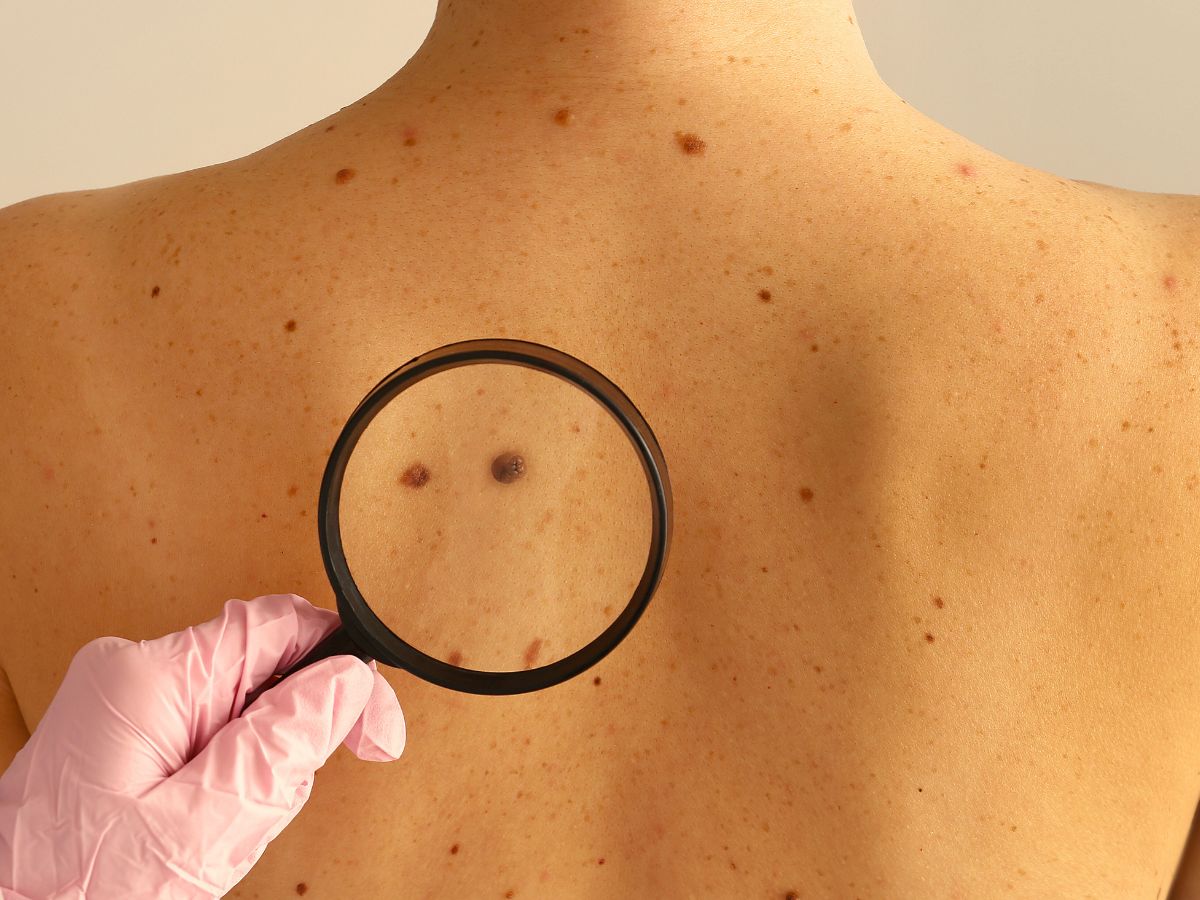You will have heard about the dangers of moles. You may be concerned about one of your particular moles. The vast majority of moles are nothing to worry about but you should be concerned if one of your moles shows certain characteristics. Follow the A.B.C.D.E rules below to see if you should be worried.
What is a Mole?
A mole, medically termed a naevus, is a small, usually dark growth on the skin formed by a cluster of melanocytes. Melanocytes are the skin cells that produce melanin, the pigment that gives our skin its colour. Moles can appear anywhere on the body and vary in size, shape, and colour. They can be flat or raised, smooth or rough, and some may have hair growing from them. Most moles are benign and pose no health risks, but monitoring them for any changes that could indicate a more severe condition, such as melanoma, is something everyone should do.

The Development and Types of Moles
Moles can develop at any age, although they are most commonly formed during childhood and adolescence. Genetics, sun exposure, and hormonal fluctuations can influence the number and appearance of moles. There are several types of moles, including:
Common Moles
These are what most people have. They are usually uniform and can be pink, tan, or brown. They’re round or oval and have a distinct edge.
Atypical Moles (Dysplastic Naevi)
These moles are larger than common moles and have irregular and indistinct borders. Their colour might not always be uniform and range from pink to dark brown. They can appear anywhere on the body but are most commonly found on the back.
Congenital Moles
These are moles that are present at birth. They vary in size and can be at a higher risk of becoming melanoma than moles that appear after birth.
Recognising the Warning Signs of Melanoma
Melanoma is a type of skin cancer that can develop from a mole. While most moles are harmless, it’s crucial to recognise the signs that might indicate a mole is turning malignant.
The ABCDEs of Melanoma
- Asymmetry: One half of the mole doesn’t match the other.
- Border: The edges are irregular, ragged, or blurred.
- Colour: The colour is inconsistent, with shades of brown, black, or tan and sometimes patches of pink, red, blue, or white.
- Diameter: It’s larger than 6mm across (about the size of a pencil, rubber end), although melanomas can be smaller than this.
- Evolving: The mole is changing in size, shape, or colour.
The Ugly Duckling Sign
This recognised term refers to a mole that looks different from the others. If other moles on your body are small and brown, and you have one large and red, it’s sometimes referred to as an ‘ugly duckling,’ and you should get it checked.
Other Critical Warning Signs
These include a mole that itches, bleeds, becomes painful, or feels tender. A mole that becomes scaly, oozes, or starts to become a sore is also a warning sign.
The Importance of Early Detection
Detecting melanoma at an early stage significantly increases the chances of successful treatment. Here’s how you can play a proactive role:
Self-examination Techniques
Regularly check your skin for any new moles or changes in existing ones. Use a mirror to inspect areas that are hard to see, like your back or the backs of your legs. Remember to check less obvious places like your scalp, between your fingers, and the soles of your feet. Get a friend or family member to look and take pictures of your moles in places you cannot see. Men of a certain age whose hair is thinning may notice moles on their scalp, but those with a thick head of hair should enlist help from someone close to check this area.
When to Consult a Doctor
If you notice any of the warning signs mentioned above or if a mole starts to grow, change its shape, or bleed, it’s time to see a doctor.
Treatment and Prevention of Moles
While most moles don’t require treatment, if a mole is suspected to be cancerous, it will be removed and sent for biopsy. The procedure is usually quick and is done under local anaesthesia. For prevention, it’s oh-so-important to:
- Limit sun exposure, especially during peak hours.
- Use sunscreen with an SPF of at least 30, even on cloudy days.
- Wear protective clothing, like wide-brimmed hats and long-sleeved shirts.
- Avoid tanning beds.
- Check mole regularly
- See a doctor if you are unsure
Moles are, for the vast majority of the time, nothing to worry about. You will worry less by keeping a keen eye out and getting them looked at whenever you have doubts.
